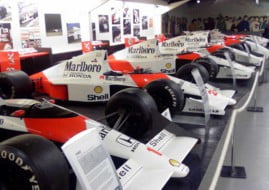Williams FW14 - 1992 Formula One Championship Winning Car
The Williams FW14 was a Formula One race car used by Canon Williams Team during 1991 and 1992. The car won 1992 world constructors’ title for the Williams and drivers’ title for Nigel Mansell. FW 14 and its upgraded version FW14B participated in 32 Formula One Grand Prix races and took 17 victories, 21 pole positions and 19 fastest laps. Such win ratio made the FW 14 one of the most successful F1 cars of all time.

Almost all-British success: British driver, British team, British car but French engine
The creator of FW14 was Adrian Newey
The car was designed by Adrian Newey, who worked under the supervision of technical director Patrick Head, and came as a replacement for Williams FW13B. Williams Team and engine supplier Renault weren’t satisfied with the results during 1991 F1 season and they ordered a new car from Newey, who after few years with March joined the team in 1990. FW14 was the first Newey’s car for Williams. He had a big budget and created the masterpiece of the racing engineering.
The Renault’s engine remained the same
The Renault’s engine was the same as before – 3.5 litre V10, which was proved as one of the strongest in the competition. The engine was paired with Williams’ 6-speed semi-automatic transmission. The chassis was made of carbon fibre and honeycomb composite structure. Newey’s advanced aerodynamics was far ahead of the cars used by the rivals, which were McLaren MP4/6, Ferrari 642 or Lotus 102B.
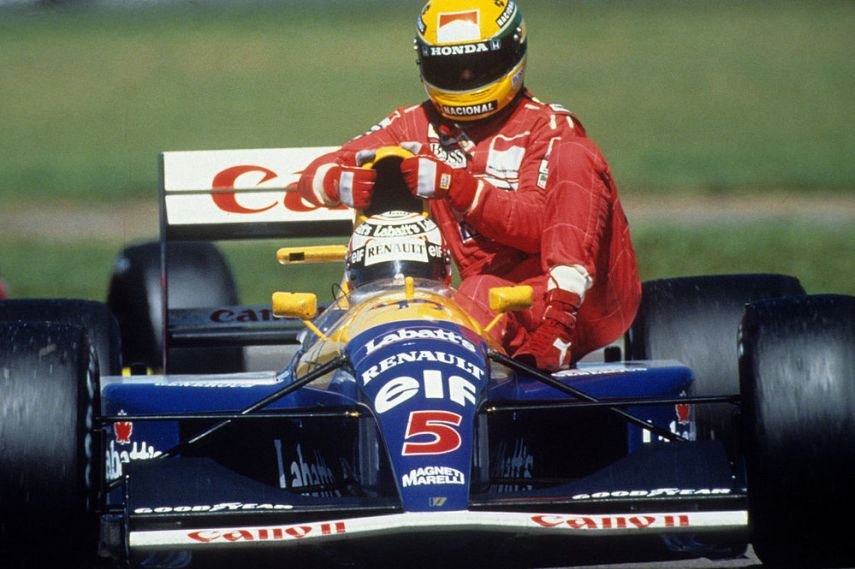
Although Nigel Mansell had a best car, Ayrton Senna took the 1991 drivers’ title
McLaren and Senna took the 1991 titles
Williams FW 14 was the most technically sophisticated car on the grid, but teething troubles prevented Williams of winning the titles in the first year of use. McLaren MP4/6 was more reliable than Williams, so both Honda Marlboro McLaren team and Ayrton Senna took the titles in 1991.
Lots of DNFs in the season-opening races
The FW 14 made its debut at the 1991 United States Grand Prix. Riccardo Patrese and Nigel Mansell qualified third and fourth respectively. They didn’t finish the race because of gearbox problems. Mansell recorded two more retirements in the following two rounds, both linked to gearbox issues.
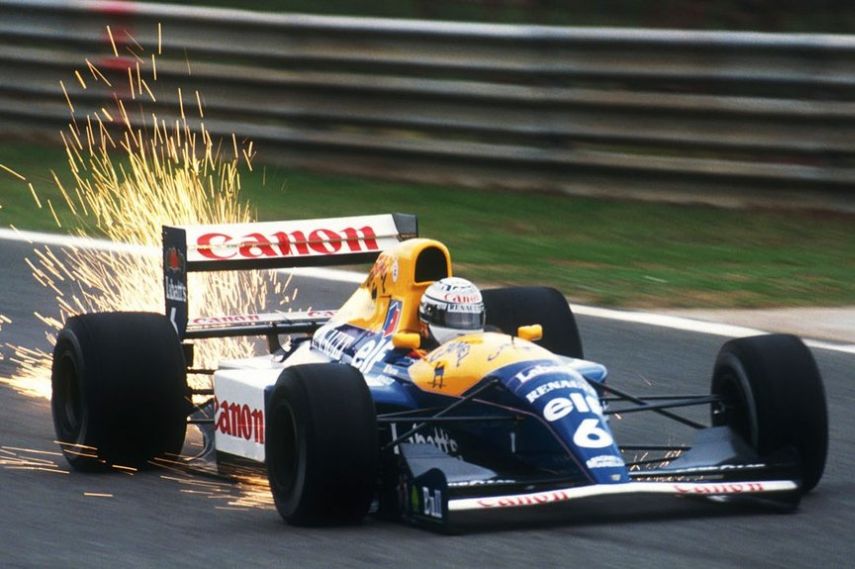
Riccardo Patrese at 1991 Portuguese Grand Prix
Seven victories during 1991 F1 championship
The first victory of FW 14 came at 1991 Mexican Grand Prix, with Patrese on the top spot and Mansell behind him. During 1991 season, Mansell and Patrese recorded seven victories between them. Two times they achieved 1-2 victories (Mexico and Germany).
Ayrton Senna with seven wins and Gerhard Berger with one victory brought the constructors’ title to McLaren, with 139 points against 125 points of Williams. Mansell and Patrese finished second and third in the drivers’ classification.
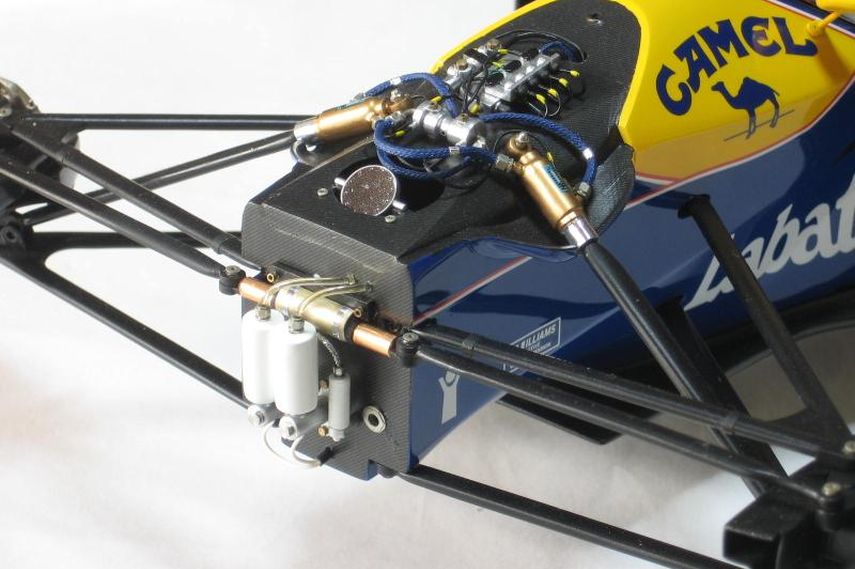
Williams FW14B had an active suspension
The FW14B had an active suspension
For the following season, an upgraded version of FW14 was prepared, named FW14B. The main technical difference was the active suspension system, while the main design differences were a longer nose and a pair of protrusions above the latter’s front pushrods. Gearbox was improved and aerodynamics package increased the level of downforce, so FW14B became again the most sophisticated car on the grid.
Mansell was absolutely dominant
This time, it was also the most successful car. After ten victories, Williams took the constructors’ world title, far ahead McLaren and Benetton. Mansell was absolutely dominant during the season and won the drivers’ title with an enormous gap ahead second placed Patrese. Mansell finished twelve of sixteen races and all twelve on the podium – he took nine wins and three second places.
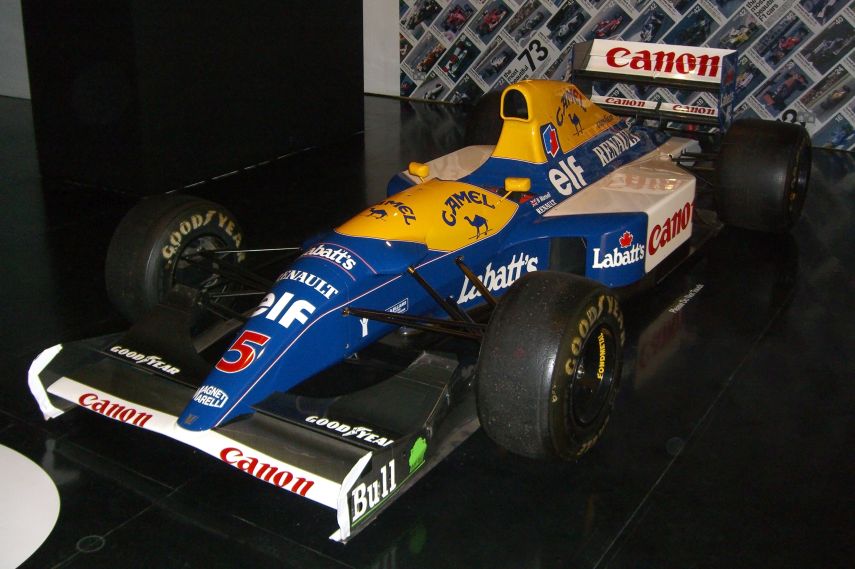
Williams FW14 deserves a special place in a history of Fomula One
15 pole positions in 16 races
At six races Williams took double victories. Mansell and Patrese were often far ahead of the rest of the field but the best example of FW14B’s dominance was the fact that Mansell took incredible 14 pole positions in 16 races and Patrese added one more pole. The only non-Williams driver who managed to took pole was Ayrton Senna at Canadian Grand Prix.
Both versions of the FW14 won 17 Formula One Grand Prix races in 32 participations. Because of such a success, Williams postponed the introduction of the next generation race car. The FW15 was already available during 1992, but it was never used because they didn’t want to break FW14B’s winning streak. Its successor FW15C was introduced in season 1993.
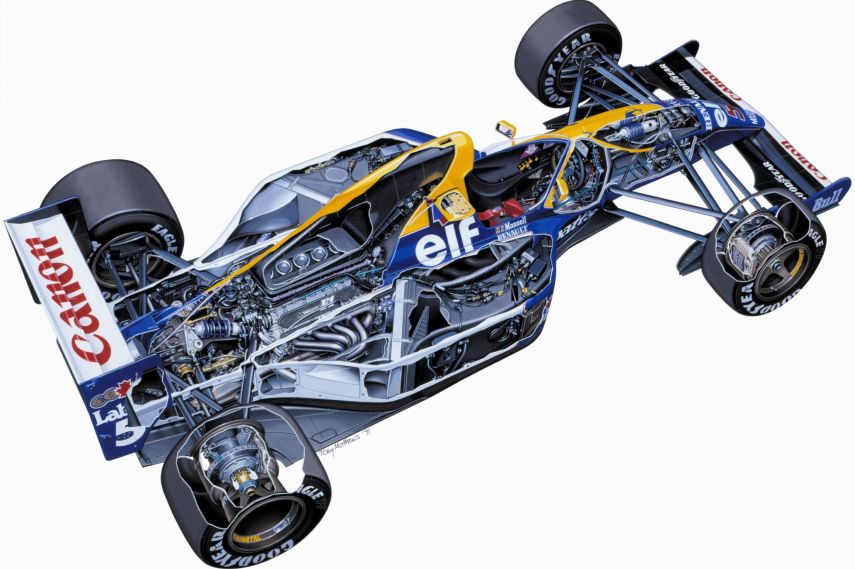
The Williams FW14 was a technically most advanced car on the F1 grid
Williams FW14/FW14B technical specifications
Chassis
Front suspension: Twin-link, pushrod-operated, hydro-pneumatic (1992: active suspension)
Rear suspension: Twin-link, pushrod-operated, hydro-pneumatic (1992: active suspension)
Suspension dampers: Williams
Wheel diameter: front: 13 inch / rear: 13 inch
Wheel rim widths: front: 11.4 inch / rear: 16.3 inch
Tyres: Goodyear
Brakes: calipers: AP / discs: Carbone Industrie
Brake pads: Carbone Industrie
Steering: Williams
Radiators: Williams/Behr
Fuel tanks: ATL
Battery: Yuasa
Instruments: Magnetti Marelli
Transmission
Gearbox: Williams six-speed transverse semi-automatic
Driveshafts: Williams
Clutch: AP
Dimensions
Wheelbase: 2921 mm
Track: front: 1803 mm / rear: 1676 mm
Gearbox weight: 50 kg
Chassis weight (tub): 50 kg
Formula weight: 505 kg
Fuel capacity: 230 litres
Engine
Type: Renault RS3C/RS4
No. of cylinders: V10 (67°)
Capacity: 3,493 cc
Maximum rpm: 14400
Fuel and oil: Elf
Sparking plugs: Champion
Fuel injection: Magneti Marelli
Ignition system: Magneti Marelli
;
Photos: williamsf1.com, f1fanatic.co.uk, f1-history.deviantart.com,



